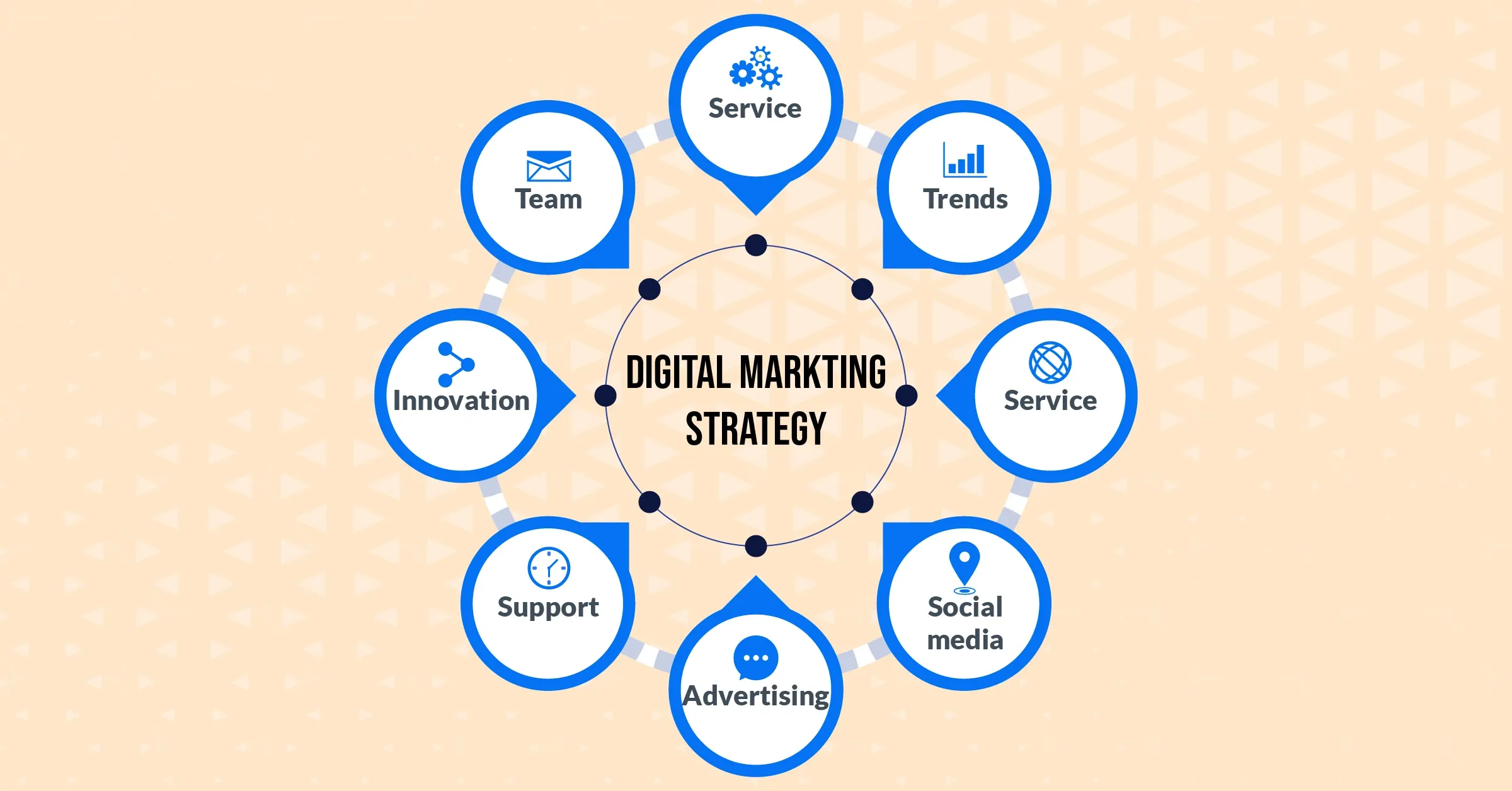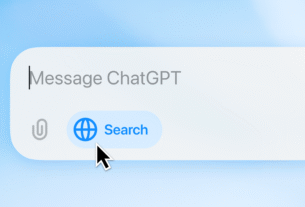Imagine launching a brand-new business online—sleek website, social media profiles sparkling with energy, and even some paid ads running. But months later, you’re still not seeing results. If this sounds familiar, you’re not alone. In 2025, where more than 5.3 billion people use the internet, the digital space is more saturated than ever. Without a clear and comprehensive digital marketing strategy, even the most promising brands can struggle to gain traction.
A digital marketing strategy isn’t just about being online; it’s about being seen, heard, and remembered by the right audience at the right time. It’s the foundation of online success, helping you align your marketing efforts with your business goals while adapting to shifting consumer behaviors, emerging platforms, and new technologies.
This article will walk you through seven powerful steps to create a digital marketing strategy that actually drives results, whether you’re starting from scratch or refining your current approach.
Why a Digital Marketing Strategy Matters in 2025
With the digital landscape evolving rapidly, many brands fall into the trap of reacting instead of planning. They chase every new platform, algorithm change, or marketing trend without a long-term roadmap. A well-structured digital marketing strategy gives you direction and focus, ensuring that every marketing dollar is used wisely and that your efforts are aligned across channels.
In 2025, search engine algorithms are smarter, social media users are more discerning, and AI-driven personalization is becoming the norm. This means businesses must not only compete for attention but also build authentic and consistent digital experiences. The absence of a clear plan often leads to fragmented messaging, wasted ad spend, and missed growth opportunities.
Step 1: Define Clear Objectives Aligned with Business Goals
A successful strategy begins with clarity. What exactly do you want to achieve? Your digital marketing objectives should support your overall business goals. Whether you want to increase brand awareness, boost online sales, grow your email list, or generate B2B leads, each goal should be Specific, Measurable, Achievable, Relevant, and Time-bound.
For example, instead of saying “get more traffic,” a more strategic objective would be: “Increase organic traffic by 30% in the next six months by optimizing blog content and link-building.”
Step 2: Know Your Target Audience Inside Out
Marketing without knowing your audience is like talking in an empty room. Understanding your ideal customers—what they value, where they spend time online, and what problems they want solved—is non-negotiable.
Today’s successful marketers go beyond demographics. They create detailed buyer personas, identify behavioral triggers, and tap into psychographic insights. Tools like Google Analytics 4, Meta Audience Insights, and AI-powered survey platforms make it easier to analyze user behavior, but human empathy remains irreplaceable. Talk to your customers, read reviews, and explore forums to deeply understand your audience’s pain points and desires.
Step 3: Audit Your Current Digital Presence
Before building forward, take stock of where you stand. Conduct a thorough audit of your website, SEO rankings, content performance, social media presence, email campaigns, and paid advertising results. Identify what’s working, what needs improvement, and what can be eliminated altogether.
You’ll want to ensure your website is optimized for both speed and mobile, your content is relevant and updated, and your analytics are set up properly to track key metrics. This diagnostic stage acts as a launchpad for strategic improvements.
Step 4: Choose the Right Digital Marketing Channels
Not every platform suits every business. A B2B software company might find greater ROI on LinkedIn and email marketing, whereas an eCommerce brand may thrive on Instagram, TikTok, and Google Ads.
Your chosen channels should reflect where your target audience spends time and how they prefer to interact. From SEO and content marketing to social media, email campaigns, influencer partnerships, and PPC advertising, each channel should support your overall strategy cohesively.
For instance, SEO continues to be a powerful long-term tactic. As of 2025, Google’s Search Generative Experience (SGE) has shifted how results appear, emphasizing content relevance, structured data, and expertise. Make sure your content is helpful, answers specific user queries, and uses schema markup to stand out in rich snippets.
Step 5: Develop High-Value, Search-Optimized Content
Content is still king—but not just any content. Your blog posts, videos, infographics, podcasts, and social updates must serve a purpose and align with your audience’s needs and search intent.
Focus on creating pillar content that covers broad topics in-depth, supported by cluster content targeting specific subtopics. Incorporating your primary focus keyword, Digital Marketing Strategy, naturally into long-form content can help boost organic visibility. Use tools like SEMrush, SurferSEO, or Frase to guide keyword targeting and content structuring.
Don’t forget the power of storytelling. In a crowded content world, what stands out is authenticity. Share case studies, customer journeys, founder stories, or behind-the-scenes content to build deeper connections.
Step 6: Leverage Marketing Automation and AI Tools
Marketing automation is no longer a luxury—it’s a necessity. AI tools now help with content generation, customer segmentation, predictive analytics, and even real-time personalization. Platforms like HubSpot, Mailchimp, and ActiveCampaign allow you to automate email sequences, lead nurturing, and even SMS campaigns based on user behavior.
AI chatbots, for instance, can now handle basic customer service queries, freeing your team to focus on high-impact interactions. AI-driven analytics platforms also provide insights that would take humans days to process, giving you a faster and more accurate understanding of campaign performance.
If you’re new to automation or want structured learning, consider enrolling in an Online Digital Marketing Course that covers tools and techniques relevant to today’s landscape.
Step 7: Monitor, Measure, and Adjust Continuously
A digital marketing strategy is not static. It’s a living, breathing framework that should evolve based on data. Once your campaigns are live, use KPIs to track progress and make data-backed decisions.
Key metrics will vary based on your goals—organic traffic, click-through rates, conversion rates, cost per acquisition, and customer lifetime value are all vital signals. Leverage tools like Google Looker Studio or Tableau to visualize performance trends and identify bottlenecks.
More importantly, embrace an agile mindset. Test new ideas through A/B experiments, listen to customer feedback, and pivot when needed. The brands that thrive are those that continuously adapt.
Looking Ahead: Trends Shaping Digital Strategies in 2025
As we move deeper into the AI era, personalization, privacy, and experience-driven content are becoming key drivers of success. Consumers expect more than just ads—they want value, connection, and control over their data.
Voice search is rising, making conversational content and local SEO more important. Video remains dominant, especially short-form video, and generative AI tools are reshaping how creatives and marketers approach content.
Social commerce, especially through platforms like TikTok Shop and Instagram Checkout, is merging the boundaries between browsing and buying. Businesses that integrate seamless shopping experiences into their digital ecosystems will gain a competitive edge.
Final Thoughts
A well-executed Digital Marketing Strategy is more than a plan—it’s a compass guiding your brand through the ever-shifting digital terrain. It keeps you aligned with your audience, adapts to technological changes, and delivers measurable growth.
Whether you’re a small business owner, an in-house marketer, or an entrepreneur, the key to digital success is consistency, clarity, and creativity. Invest in your strategy, keep learning, and never stop optimizing. Because in the digital age, standing still is falling behind.
For those just starting out or looking to upgrade their skills, enrolling in a reputable Online Digital Marketing Course can provide the practical knowledge and tools to bring your strategy to life.


